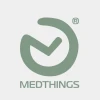The IoT is so firmly entrenched in our lives that sometimes we do not even notice its work. We draw up reports based on the readings from sensors thousands of kilometers away. The digital camera has noticed movement in the backyard and has sent you a notification to make sure it is just a neighbor's dog. You easily indicate where your lost luggage is and the smart home system automatically turns on the kettle, underfloor heating, and relaxing music as you drive up to the garage. Want to know what mechanisms are behind these modern conveniences?
The Things
Physical devices are exactly those “things” in the IoT. Technically, these are sensors and actuators. Sensors collect and process data from the environment like temperature, lighting level, movement and send it further to the IoT system. Actuators, on the other hand, receive data from the IoT and change the environment, for example, they can turn on or off heating or lighting.
Connectivity
As a result, the sensor data should be in the cloud. This can be achieved with several standard solutions and several solutions designed specifically for the needs of IoT.
✓ WiFi is a fast, popular and familiar solution, but it is too energy-consuming for battery operated devices. We recommend using it only in devices that can be charged regularly.
✓ Ethernet is a wired, but fast and very secure solution, which is however only suitable for stationary devices.
✓ Bluetooth Low-Energy as the name implies consumes a minimum of energy while providing a high data transfer rate but not suitable enough for transferring large amounts of data.
✓ LoRaWAN was developed specifically for IoT solutions, allows wirelessly transmitting data over long distances, and is characterized by extremely low energy consumption with a battery charge of even up to 10 years.
Some projects also use NFC, ZigBee, and Cellular networks technologies.
Edge analytics
We need this stage in order to unload the system and the cloud. The main idea is that the data received from the sensors should be processed as soon as possible and stored as close to the sources as possible. At this stage, the data can also be filtered, formatted, or decoded for processing in the following stages. This approach allows you to process large amounts of data locally and in real-time, saving lots of time and resources that would be spent on forwarding the full amount of data to the cloud.
Processing
At this stage, the data is sent to the cloud, where it is stored and analyzed. At this stage, the data can get into the data lake and be stored in their raw and unsorted form or be integrated with other data storage systems such as ERP or CRM for joint analysis and processing. Regardless of the method of data storage and processing, the task of this stage is to transform, analyze and visualize the received data and output it to an external source, where it could be processed by the end-user.
The magic of IoT is that data goes through all these layers in seconds, giving us the unique ability to track them in real or near-real-time. Every IoT solution you are dealing with is based on these fundamental steps. By carefully working through each of them, we create a reliable, scalable, and functional device. Find some inspiration in our portfolio.
 Kateryna Kozakova
Kateryna Kozakova






















